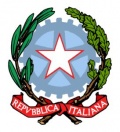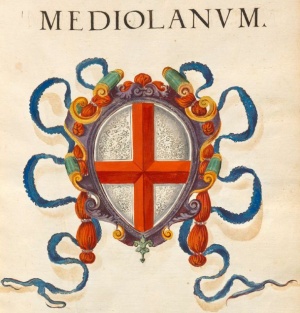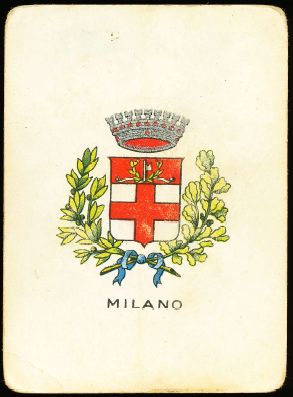Milano: Difference between revisions
Knorrepoes (talk | contribs) m (Text replacement - "px|Stemma di {{PAGENAME}}]]" to "px|Stemma di {{PAGENAME}}/Arms (crest) of {{PAGENAME}}]]") |
Knorrepoes (talk | contribs) m (Text replacement - "|'''English''' ↵| {{blazon wanted}}" to "|'''English''' | blazon wanted") |
||
| Line 17: | Line 17: | ||
|- | |- | ||
|'''English''' | |'''English''' | ||
| | | blazon wanted | ||
|} | |} | ||
Revision as of 05:51, 8 April 2023
Italy heraldry portal
This page is part of the Italy heraldry portal |
Heraldry of the World |
|
Civic heraldry:
|
Other heraldry: |
MILANO
Region : Lombardia
Province : Milano
| Italian |
D’argento alla croce di rosso. |
| English | blazon wanted |
Origin/meaning
The arms were officially granted on March 19, 1934.
Founded by the celtic people Insubri around the 15th century b.C. in the middle of the Valle Padana (from which the Latin name Mediolanum derives), Milan is one of the main towns in northern Italy.
In the 14th century a lot of north Italian towns rebelled against the power of their Lords and became independent as little states: they elected their authorities, did their laws, made justice, minted their money and named themselves "Comune" (means "Mutual"). The Emperor Friederik I of Swaben, named "Readbeard", moved war against the Comuni to restore his authority in the peninsula. In 1160 he besieged Milan and after two years, in the Palm's Sunday of 1162, the city was destroyed.
In the 7th April 1167, in the benedictine abbey of Pontida (near Bergamo) the main cities of the area took an oath: to fight against the Emperor for their liberty and independence. Together with Milan, the representatives of Lodi, Bergamo, Brescia, Vercelli, Alessandria, Verona, Vicenza, Padova, Treviso, Venezia, Cremona, Mantova, Piacenza, Parma, Modena, Bologna, and Ferrara took part to the event and assumed the name of Lega Lombarda ( "Lumbard Alliance") and adopted the banner of the Roman Church: a red cross in a wite field, consigned in 1066 by the pope Alessandro II (Anselmo da Baggio, from Milan) to Erembaldo, the city-captain and head of the Reformist Party. In meantime the "Vexillum Ecclesiae" (the same of saint George, saint Michael and the reborn Christ) became the arms of Milan. In 1183 the same Emperor acknowledged the Municipal Autonomy with the treaty signed in Konstanz. After this most part of the allied cities adopted a red cross in their arms.
During the Mussolini regime, the arms showed a chief with fascist symbols, see below.
| The arms around 1550 |
The arms in a 17th century manuscript |
| The arms in a 16th century manuscript |
The arms in the Brioschi albums 1930s |
| The arms on a Fassi trade card |
The arms in the Abadie albums |
Literature: Image from http://www.araldicacivica.it
Contact and Support
Partners:
Your logo here ?
Contact us
© since 1995, Heraldry of the World, Ralf Hartemink 
Index of the site


















